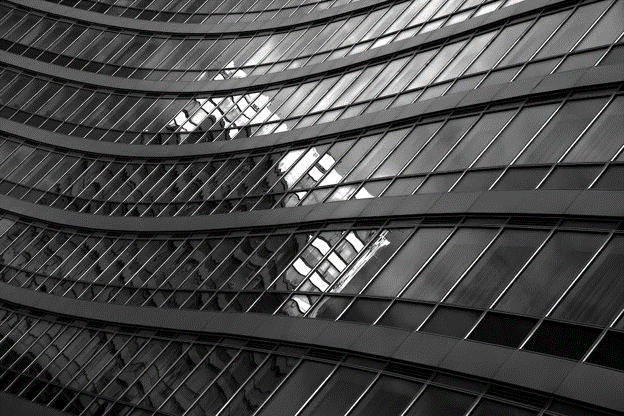In our previous explorations of uPVC windows, we’ve delved into their unmatched durability, effectiveness in various climates, and their positive impact on environmental sustainability. Today, we turn our attention to a critical aspect of home comfort and economy—energy efficiency. As winter temperatures grip homes across the United States and beyond, heating costs become a substantial concern for developers. According to the Energy Information Administration (EIA), average heating bills vary significantly, influenced by factors ranging from heating preferences to the type of fuel used.

US home heating bills are expected to remain flat or even decrease this winter, as stated by the EIA. However, the disparity in heating costs persists, with homes spending anywhere from $809 to $2,285 annually depending on the heating type. These costs not only reflect the amount of energy consumed for space and water heating but also highlight the challenges in balancing personal preferences for indoor temperatures.
Let us explore how opting for uPVC windows, renowned for their energy-efficient properties, can play a pivotal role in reducing heating costs. By focusing on key factors such as energy consumption, heat transfer, and the overall efficiency of windows and doors, we aim to shed light on the transformative impact uPVC windows can have on lowering energy bills. Let’s dive into the world of uPVC windows and discover how they offer a cost-effective and sustainable solution for developers seeking warmth, comfort, and substantial energy savings.
Low Heat Conductivity: uPVC vs. Aluminum Windows
When it comes to selecting the right windows for your project, the choice between uPVC and aluminum is pivotal, impacting factors such as energy efficiency, durability, and cost-effectiveness.

In this section, we focus on one key aspect that significantly contributes to energy efficiency – low heat conductivity.
Understanding uPVC and Aluminum:
uPVC (Unplasticized Polyvinyl Chloride): uPVC, a robust and energy-efficient plastic material, has become a popular choice for window frames. Its durability, low maintenance, and superior energy efficiency make it an ideal option for developers seeking long-lasting and environmentally friendly solutions.
Aluminum: Aluminum, a lightweight metal known for its strength and sleek design possibilities, offers a modern aesthetic. However, traditional aluminum windows may pose challenges in terms of heat conductivity. Notably, there’s a variation called thermally broken aluminum, which incorporates a thermal barrier, preventing heat transfer and enhancing energy efficiency.
Low U-Factor: uPVC Windows and Efficient Thermal Insulation
As we delve deeper into the realm of energy-efficient windows, another critical factor to consider is the U-Factor. The U-Factor, also known as thermal transmittance, gauges the rate at which a window conducts non-solar heat flow.

Understanding the implications of a low U-Factor is crucial for those seeking optimal thermal insulation, and uPVC windows stand out for their commendable performance in this regard.
Explaining U-Factor:
The U-Factor is a numerical value that measures how well a window prevents heat from escaping a building. It represents the rate of heat transfer, with lower U-Factor values indicating better insulation capabilities. The measurement is expressed in BTU/(hr·ft²·°F), signifying the amount of heat passing through one square foot of the window area for every degree Fahrenheit difference in temperature across the window.
Importance of Low U-Factor:
A low U-Factor signifies efficient thermal insulation, reducing heat transfer between the interior and exterior of a building. This is particularly crucial during colder months when maintaining a comfortable indoor temperature becomes a priority. Windows with low U-Factor values help trap heat inside, minimizing the need for constant heating and contributing to significant energy savings.
Low Solar Heat Gain Coefficient: Enhancing uPVC Window Energy Efficiency
In the pursuit of energy-efficient windows, understanding the Solar Heat Gain Coefficient (SHGC) becomes paramount. The SHGC rating is a crucial metric that gauges how much solar radiation can pass through a window, influencing the amount of heat entering a building.

For those considering uPVC windows, comprehending the significance of a low SHGC rating is key to achieving optimal energy efficiency.
Explaining SHGC:
The SHGC rating is expressed as a ratio, with 1 representing the maximum solar heat allowed through a window and 0 indicating the least possible. For instance, a window with an SHGC of 0.30 permits 30% of available solar heat to pass through. This rating considers the entire window assembly, including glazing, window frame, and any spacers.
Measurement and Rating:
The National Fenestration Rating Council (NFRC) plays a pivotal role in testing and assigning SHGC ratings. Using a specific formula involving the shading coefficient (SC), the NFRC calculates the SHGC rating by multiplying SC by 0.87. The lower the shading coefficient, the better the window’s SHGC rating.
Ideal SHGC Rating:
The optimal SHGC rating varies based on the climate of the region where the window will be installed. For heating-dominated climates, a higher SHGC rating (between 0.30 and 0.60) is recommended to harness solar warmth during winter. In cooling-dominated climates, windows with a lower SHGC (less than 0.40) are preferred to block excessive heat and reduce the need for air conditioning.
Double and Triple Glazing: Balancing Energy Efficiency and Cost
As we navigate the realm of energy-efficient windows, the choice between double and triple glazing becomes a pivotal consideration. Windows are not just aesthetic elements; they play a crucial role in maintaining comfort and energy efficiency in our homes.

In this section, we will delve into the definition and benefits of double and triple glazing, shedding light on the factors that influence the decision-making process for developers.
Defining Double and Triple Glazing:
- Double Glazing:
- Double pane windows, also known as dual pane windows or double-glazed windows, consist of two panes of glass with an insulating layer of air or gas in between. This configuration acts as a sound barrier and improves energy efficiency by reducing heat transfer. They strike a balance between performance and cost-effectiveness, offering significant improvements over single pane windows.
- Triple Glazing:
- Triple-pane windows, as the name suggests, consist of three panes of glass with two insulating layers of air or gas in between. This additional pane and insulation create an even more effective barrier against heat loss and noise transmission. Triple pane windows are known for their superior energy efficiency and are particularly advantageous in regions with extreme temperatures.
Price Difference Between Double and Triple Glazing:
Understanding the cost implications is crucial when deciding between double and triple glazing. The price difference can vary based on factors such as window size, brand, and installation costs. On average, triple pane windows can cost around 10-15% more than double pane windows. While this initial increase in cost might seem significant, it’s essential to consider the long-term benefits and potential energy savings that triple pane windows can provide.
Balancing Cost and Energy Efficiency:
Benefits of Double Glazing:
- Cost-Effective: Double glazing strikes a balance between performance and cost, making it a more budget-friendly option.
- Improved Energy Efficiency: While not as effective as triple glazing, double pane windows still offer considerable improvements in energy efficiency compared to single pane windows.
Benefits of Triple Glazing:
- Superior Energy Efficiency: Triple glazing provides enhanced insulation, making it ideal for regions with extreme temperatures.
- Noise Reduction: The additional pane in triple glazing further contributes to soundproofing, creating a quieter indoor environment.
- Long-Term Savings: Despite the higher initial cost, the potential for energy savings in the long run can justify the investment.
Not All uPVC Windows Are Equally Energy Efficient
Not all uPVC windows are equally energy-efficient, and deciphering their performance requires understanding the National Fenestration Rating Council (NFRC) stickers. These stickers provide a standardized way to evaluate energy efficiency, offering metrics like U-Factor, Solar Heat Gain Coefficient (SHGC), Visible Transmittance (VT), and Air Leakage. developers and contractors can use NFRC ratings to make informed decisions, ensuring they choose windows that align with their energy efficiency goals.
Conclusion: Making Informed Choices for Energy-Efficient Windows
As we conclude our exploration of the intricacies surrounding uPVC windows and their impact on energy efficiency, it becomes evident that the choices we make extend beyond aesthetics. Selecting the right windows involves a thoughtful consideration of factors such as energy consumption, heat transfer, and environmental impact. The journey from double to triple glazing, understanding NFRC ratings, and decoding the nuances of energy-efficient solutions, guides us toward creating homes that are both comfortable and sustainable.
Embracing Sustainable Practices
The paradigm shift toward energy-efficient buildings is not just a trend; it’s a conscious choice to reduce greenhouse gas emissions, lower energy bills, and create spaces that resonate with the principles of sustainability. Vistaza contributes to this shift by offering a wealth of knowledge on topics ranging from solar heat gain to thermal insulation, assisting users in making choices that lead to significant energy savings.
A Smart Investment for Modern Living
Investing in energy-efficient solutions, such as uPVC windows with double or triple glazing, is not just about meeting current needs but also about future-proofing our homes. The benefits of reduced energy costs, lower carbon footprints, and enhanced comfort make these choices a smart investment in the modern era of home living.
The Path Forward
As we navigate the landscape of window choices, let’s embrace the possibilities that uPVC windows offer for creating environmentally conscious and energy-efficient homes. Vistaza continues to be a partner on this journey, providing resources, insights, and a community that shares a common vision of sustainable living.
How Vistaza Can Help:
In the realm of uPVC windows and energy efficiency, Vistaza stands as a guiding beacon. Our commitment to providing information empowers developers and contractors to make informed decisions. By contacting our team of experts, users gain access to valuable insights, comparisons, and recommendations, ensuring that the chosen windows align with their energy efficiency goals.




